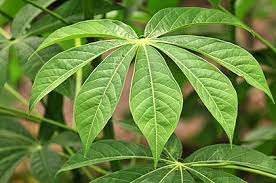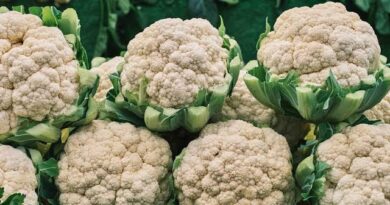Cassava Storage Parenchyma: Economic Importance, Uses and By-Products
Cassava storage parenchyma consists of specialized plant cells called parenchyma cells. These cells are relatively simple in structure and function and are known for their ability to store starch granules. The primary function of cassava storage parenchyma is to store energy in the form of starch. These cells accumulate and store starch granules in large quantities, making cassava roots an excellent source of carbohydrates.
The storage parenchyma cells in cassava roots are typically round to oval in shape. They are closely packed together, forming the bulk of the root’s inner tissue. The arrangement of these cells allows for efficient storage and easy extraction of starch. The cytoplasm of cassava storage parenchyma cells contains numerous small vacuoles filled with starch granules. These granules serve as reserves that the plant can use during periods of stress, such as drought or limited nutrient availability.
Cassava is a resilient crop that can thrive in poor soil conditions and withstand prolonged periods of drought. The extensive storage of starch in the parenchyma cells helps the plant endure adverse environmental conditions by providing a readily available source of energy. As the cassava plant grows, the storage parenchyma cells undergo significant enlargement and starch accumulation, leading to the development of the thick, fleshy tuberous roots that are harvested for consumption.
Cassava storage parenchyma cells are specialized plant cells responsible for storing starch granules in the tuberous roots of the cassava plant. This starch storage is a vital adaptation that allows cassava to thrive in challenging environmental conditions and makes it a valuable source of carbohydrates for human consumption and industrial applications.
The Economic Importance and Uses of Cassava Storage Parenchyma

Cassava (Manihot esculenta) is a tropical root crop that plays a vital role in the agriculture and economy of many countries, particularly in Africa, Asia, and Latin America. Cassava storage parenchyma, also known as the storage roots or tuberous roots, has several economic importance and uses, which are outlined below:
1. Food Source: Cassava storage parenchyma is a staple food for millions of people around the world. It provides a significant portion of the daily calorie intake for many communities. The roots can be consumed in various ways, such as boiled, fried, mashed, or processed into flour for making bread, cakes, and other food products.
2. Livestock Feed: Cassava roots can be used as animal feed for livestock such as pigs, cattle, and poultry. It serves as a valuable source of energy and nutrients for animals, contributing to the livestock industry’s sustainability.
3. Industrial Starch Production: Cassava storage parenchyma is a rich source of starch, making it an essential raw material for starch production. Starch is widely used in various industries, including food processing, paper manufacturing, textiles, and pharmaceuticals.
4. Flour and Baking Industry: Cassava flour, produced from the storage roots, is used in baking and confectionery products. It can be a gluten-free alternative to wheat flour for individuals with gluten intolerance.
5. Alcohol Production: Cassava can be fermented and processed into alcohol, particularly in the form of ethanol. Ethanol has various industrial applications, including fuel production and alcoholic beverage manufacturing.
6. Traditional Medicine: In some cultures, cassava storage parenchyma is used in traditional medicine to treat ailments and as a source of herbal remedies. It contains various phytochemicals with potential medicinal properties.
Read Also: Cassava Tuberous Roots: Economic Importance, Uses and By-Products
7. Export and Income Generation: Cassava and its products, including starch and flour, can be exported to international markets, generating income for countries that cultivate and process cassava. It contributes to the overall economy by promoting international trade.
8. Employment Opportunities: The cultivation, processing, and marketing of cassava create employment opportunities for people in rural areas, particularly in regions where cassava farming is a primary source of livelihood.
9. Biodiesel Production: Cassava can be used to produce biodiesel, a renewable and environmentally friendly alternative to fossil fuels. Biodiesel production from cassava can help reduce the dependence on fossil fuels and mitigate environmental concerns.
10. Soil Improvement: Cassava is known for its ability to thrive in marginal soils and can improve soil fertility through its root system. This can indirectly benefit other crops and agriculture in the region.
11. Crop Rotation and Pest Management: Cassava can be incorporated into crop rotation systems, helping to break pest and disease cycles for other crops. This can reduce the need for chemical pesticides and improve overall agricultural sustainability.
The Products and By-products That Can Be Derived From Cassava Storage Parenchyma
Cassava (Manihot esculenta) is a versatile tropical root crop that serves as a valuable source of carbohydrates and other nutrients. The storage parenchyma, which is the starchy tissue found within cassava roots, can be processed to yield various products and by-products.
Here’s a list of some of the products and by-products that can be derived from cassava storage parenchyma:
1. Cassava Flour (Fufu Flour): Cassava flour is a staple food product made by grating and drying cassava roots. It can be used to make dishes like fufu, a starchy side dish popular in many African countries.
2. Tapioca Pearls: Tapioca pearls are small, round balls made from cassava starch. They are commonly used in desserts like tapioca pudding and bubble tea.
3. Cassava Starch: Cassava starch, also known as tapioca starch, is a fine, white powder extracted from cassava roots. It is used as a thickening agent in cooking and baking and can also be used to make noodles, dumplings, and more.
4. Cassava Chips: Cassava chips are thinly sliced and deep-fried cassava roots. They are a popular snack in many tropical countries.
5. Cassava Fries: Similar to potato fries, cassava fries are made by cutting cassava roots into fry-shaped pieces and frying them until they are crispy.
Read Also: Olive Roots: Economic Importance, Uses, and By-Products
6. Cassava Bread: Cassava can be used to make gluten-free bread by mixing cassava flour with other ingredients like eggs and baking powder.
7. Cassava Cake: Cassava cake is a sweet dessert made from cassava, coconut milk, sugar, and eggs. It’s a popular dessert in many Southeast Asian countries.
8. Cassava Chips or Pellets (Animal Feed): After processing cassava roots for starch or flour, the leftover fibers and peels can be converted into animal feed, especially for livestock.
9. Cassava Peel Meal: Cassava peel meal is a by-product produced when cassava peels are dried and ground. It can be used as a supplementary animal feed.
10. Cassava Residue (Peel Waste): The peels and residual material left after processing cassava can also be used for bioenergy production, such as biogas or bioethanol.
11. Cassava Alcohol: Cassava can be fermented and distilled to produce cassava alcohol, which can be used for industrial purposes, including the production of alcoholic beverages and as a solvent in various industries.
12. Cassava Leaves (as a Vegetable): While not derived directly from the storage parenchyma, cassava leaves are also edible and are consumed as a vegetable in some regions. They are a good source of vitamins and minerals.
13. Cassava Residue for Soil Amendment: Cassava peels and waste can be composted and used as organic matter to improve soil fertility.
In conclusion, cassava storage parenchyma has significant economic importance and a wide range of uses, from being a staple food source to serving as a raw material for various industries. Its versatility and adaptability make it a crucial crop in many countries, contributing to food security, income generation, and sustainable agriculture.
Read Also: A Comprehensive Guide To Circular Economy Consulting









